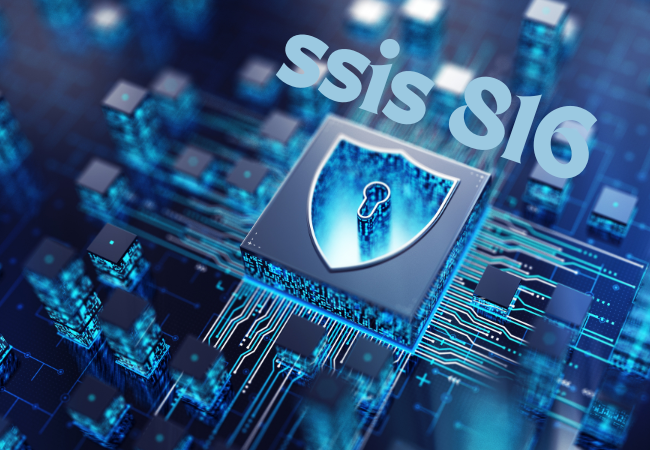Understanding SSIS 816: A Comprehensive Guide

In today’s data-driven world, efficient data management is crucial. One of the tools that has revolutionized the way we handle data is SQL Server Integration Services (SSIS). Among its various versions, SSIS 816 stands out for its advanced features and capabilities. But what exactly is SSIS 816, and why is it so important?
SSIS 816 is a sophisticated data integration tool that enables users to perform a wide range of data migration, transformation, and integration tasks. It’s designed to handle large volumes of data from various sources, ensuring seamless data flow and accurate data processing. Whether you’re a data engineer, a business analyst, or an IT professional, understanding SSIS 816 can significantly enhance your data management capabilities.
History and Evolution of SSIS
Origins of SSIS
SQL Server Integration Services (SSIS) has its roots in the early 2000s when Microsoft introduced it as part of SQL Server 2005. Initially, it replaced Data Transformation Services (DTS) and provided a more robust and scalable solution for data integration tasks.
Key Milestones in SSIS Development
Over the years, SSIS has undergone significant transformations. Each version brought new features and improvements, addressing the evolving needs of data professionals. From the introduction of data warehousing capabilities to enhanced performance and usability, SSIS has consistently been at the forefront of data integration technology.
Transition to SSIS 816
The release of SSIS 816 marked a significant milestone in the evolution of SSIS. This version introduced a host of new features aimed at improving performance, scalability, and ease of use. With SSIS 816, users can now handle more complex data integration tasks with greater efficiency and reliability.
Core Features of SSIS 816
Enhanced Data Integration Capabilities
SSIS 816 boasts enhanced data integration capabilities, allowing users to connect to a wide variety of data sources. Whether it’s a traditional database, a cloud service, or a big data platform, SSIS 816 can seamlessly integrate and process data from multiple sources.
Improved Performance and Scalability
One of the standout features of SSIS 816 is its improved performance and scalability. With optimized data flow and processing engines, SSIS 816 can handle larger datasets and more complex transformations without compromising on speed or efficiency.
Advanced Error Handling and Logging
SSIS 816 also includes advanced error handling and logging features. These enhancements ensure that any issues encountered during data processing are promptly identified and addressed, minimizing disruptions and ensuring data integrity.Getting Started with SSIS 816
Installation and Setup
To get started with SSIS 816, you’ll need to install and set up the necessary components. This includes SQL Server, SQL Server Data Tools (SSDT), and any relevant updates or patches. The installation process is straightforward, but it’s essential to follow the guidelines to ensure a smooth setup.
Basic Components and Architecture
Once installed, it’s crucial to understand the basic components and architecture of SSIS 816. At its core, SSIS 816 consists of packages, tasks, and data flows, each playing a vital role in data integration. Familiarizing yourself with these components will help you create efficient and effective SSIS packages.
SSIS 816 Components
Control Flow
The control flow is the backbone of any SSIS package. It defines the sequence of tasks and the flow of execution within a package. From data extraction to transformation and loading, the control flow ensures that each step is executed in the correct order.
Data Flow
The data flow component is responsible for the actual movement and transformation of data. It includes various data flow tasks, such as data source, transformation, and destination components, each designed to handle specific data processing tasks.
Event Handlers
Event handlers in SSIS 816 allow you to define actions that occur in response to specific events. Whether it’s an error, a warning, or a completion event, event handlers ensure that appropriate actions are taken to address any issues or requirements.
Parameters and Variables
Parameters and variables play a crucial role in making SSIS packages flexible and reusable. Parameters allow you to pass values into a package, while variables store values that can be used and modified during package execution.
Creating Your First SSIS Package
Step-by-Step Guide
Creating your first SSIS package might seem daunting, but with a step-by-step guide, it becomes much more manageable. Start by defining your data sources and destinations, then create the necessary data flow tasks and transformations. Finally, configure any control flow tasks and execute the package to ensure everything works as expected.
Common Use Cases
SSIS packages can be used for a wide range of data integration tasks. Common use cases include data migration, ETL (Extract, Transform, Load) processes, and data warehousing. Understanding these use cases will help you apply SSIS 816 effectively in your projects.
Advanced SSIS 816 Features
Data Transformation and Cleansing
Data transformation and cleansing are critical aspects of data integration. SSIS 816 offers advanced transformation and cleansing capabilities, allowing you to clean, format, and enrich your data before loading it into the destination.
Working with Different Data Sources
SSIS 816 supports a wide range of data sources, from traditional databases to cloud-based services and big data platforms. This versatility ensures that you can integrate data from virtually any source, providing a comprehensive view of your data landscape.
Integration with Other Microsoft Services
SSIS 816 seamlessly integrates with other Microsoft services, such as Azure Data Factory, Power BI, and SQL Server. This integration allows you to leverage the full power of the Microsoft ecosystem, enhancing your data integration and analytics capabilities.
Best Practices for SSIS 816
Performance Optimization Techniques
To get the most out of SSIS 816, it’s essential to follow performance optimization techniques. These include using parallel processing, optimizing data flow tasks, and minimizing memory usage. Implementing these techniques will ensure that your SSIS packages run efficiently and effectively.
Error Handling Strategies
Effective error handling is crucial for maintaining data integrity. SSIS 816 offers various error handling strategies, such as event handlers, error outputs, and logging. Understanding and implementing these strategies will help you manage and resolve any issues that arise during package execution.
Security Considerations
Security is a critical aspect of any data integration process. SSIS 816 provides robust security features, including encryption, authentication, and role-based access control. Ensuring that your SSIS packages are secure will protect your data from unauthorized access and breaches.
Common Challenges and Solutions
Troubleshooting Common Issues
Like any technology, SSIS 816 can present challenges. Common issues include connection problems, data type mismatches, and performance bottlenecks. Knowing how to troubleshoot these issues will save you time and frustration.
Tips for Efficient Debugging
Efficient debugging is essential for resolving issues quickly. SSIS 816 offers various debugging tools and techniques, such as breakpoints, data viewers, and logging. Using these tools will help you identify and fix problems more efficiently.
Case Studies and Real-World Applications
Examples from Various Industries
SSIS 816 is used across various industries, from healthcare to finance to retail. Each industry has unique data integration needs, and SSIS 816 provides the flexibility and power to meet those needs. Exploring examples from different industries will give you insights into how SSIS 816 can be applied in your own projects.
Success Stories
Success stories highlight the impact of SSIS 816 in real-world scenarios. These stories showcase how organizations have leveraged SSIS 816 to achieve their data integration goals, providing inspiration and practical insights for your own projects.
SSIS 816 and Big Data
Handling Large Datasets
Big data presents unique challenges, but SSIS 816 is equipped to handle large datasets efficiently. With features like parallel processing and optimized data flow, SSIS 816 can process vast amounts of data quickly and accurately.
Integration with Hadoop and Azure
SSIS 816 integrates seamlessly with big data platforms like Hadoop and Azure. This integration allows you to leverage the power of big data technologies, enabling advanced analytics and data processing capabilities.
Future Trends in SSIS
Predictions for Future Versions
The future of SSIS looks promising, with ongoing developments and enhancements. Predictions for future versions include more advanced machine learning capabilities, improved cloud integration, and enhanced user interfaces. Staying updated on these trends will ensure that you continue to leverage the latest features and capabilities.
Upcoming Features and Enhancements
Upcoming features and enhancements in SSIS will further improve its performance and usability. These may include better integration with AI technologies, more robust security features, and enhanced support for real-time data processing.
Learning Resources for SSIS 816
Books, Courses, and Online Tutorials
There are numerous resources available to help you learn SSIS 816. Books, courses, and online tutorials provide comprehensive guidance, from basic concepts to advanced techniques. Investing time in these resources will enhance your SSIS skills and knowledge.
Community and Support
The SSIS community is a valuable resource for learning and support. Online forums, user groups, and professional networks provide opportunities to connect with other SSIS users, share knowledge, and seek assistance when needed.
Conclusion
In conclusion, SSIS 816 is a powerful and versatile tool for data integration. Its advanced features, improved performance, and robust security make it an essential component of any data management strategy. By understanding and leveraging SSIS 816, you can enhance your data integration capabilities, streamline your workflows, and achieve better data outcomes.
FAQs
What is the primary use of SSIS 816?
SSIS 816 is primarily used for data integration tasks, including data migration, transformation, and loading from various sources.
How does SSIS 816 differ from previous versions?
SSIS 816 offers enhanced performance, improved scalability, and advanced error handling features compared to previous versions.
Can SSIS 816 be used with non-Microsoft databases?
Yes, SSIS 816 supports integration with various non-Microsoft databases, ensuring flexibility in data integration tasks.
What are the main benefits of using SSIS 816?
The main benefits include enhanced data integration capabilities, improved performance, advanced error handling, and robust security features.
Where can I find tutorials for SSIS 816?
You can find tutorials for SSIS 816 through online courses, books, and community forums dedicated to SSIS and data integration.



